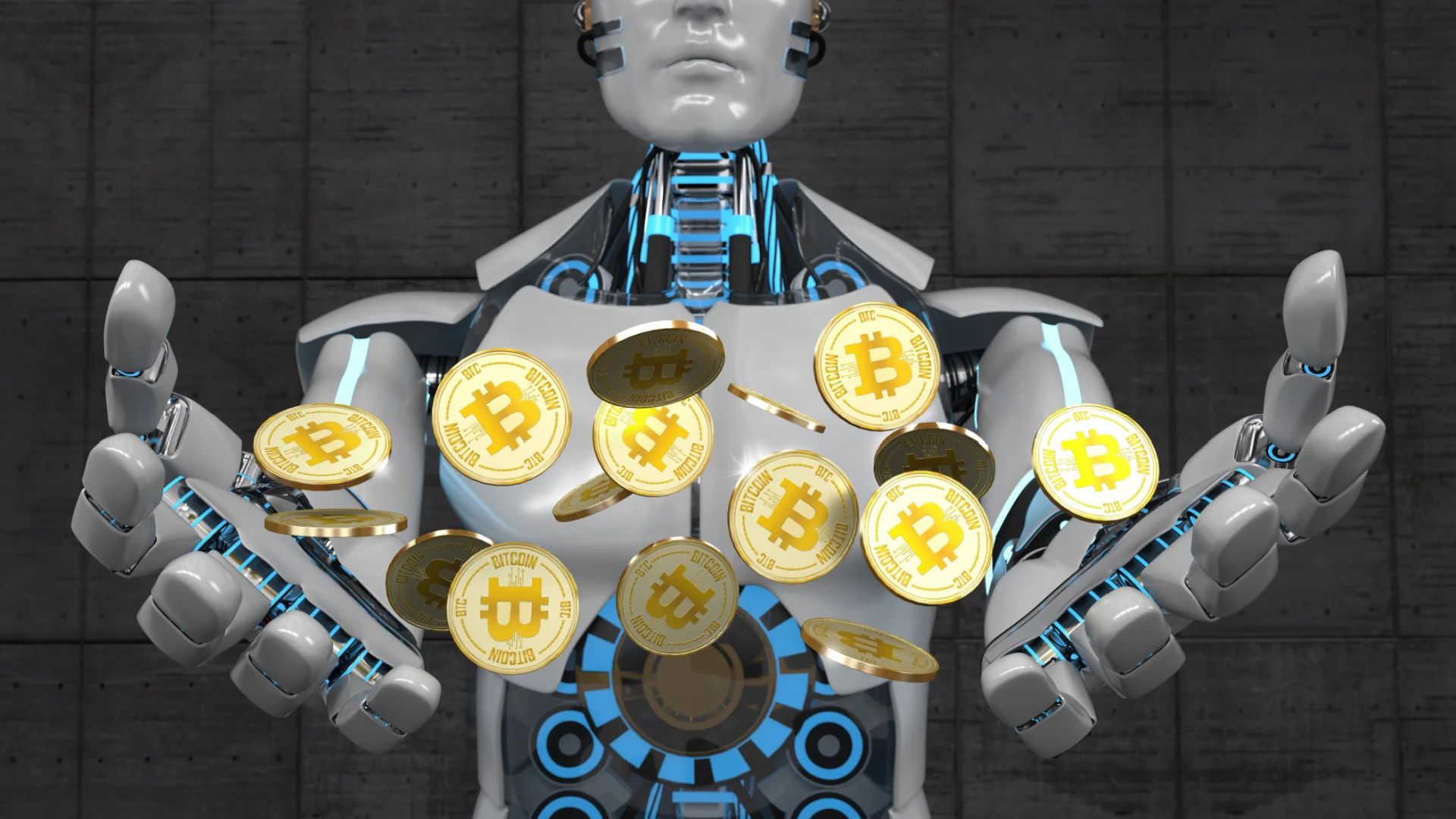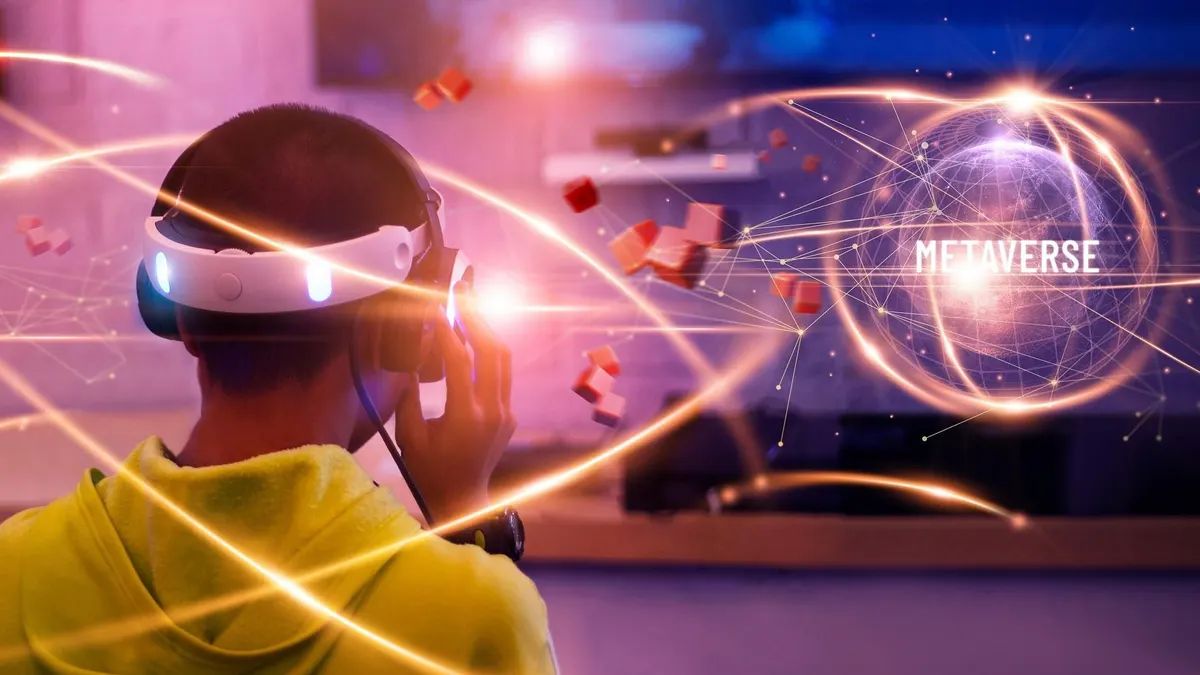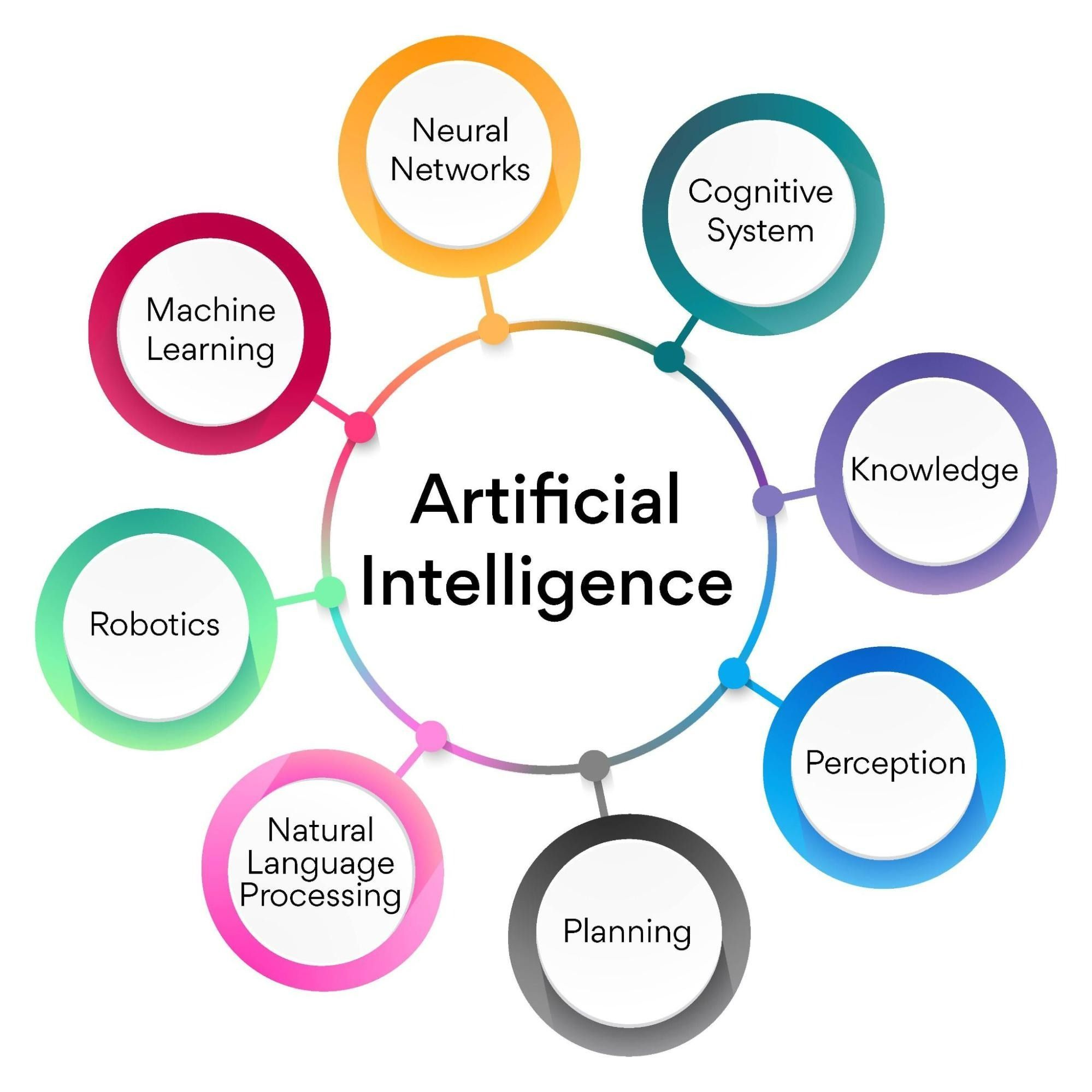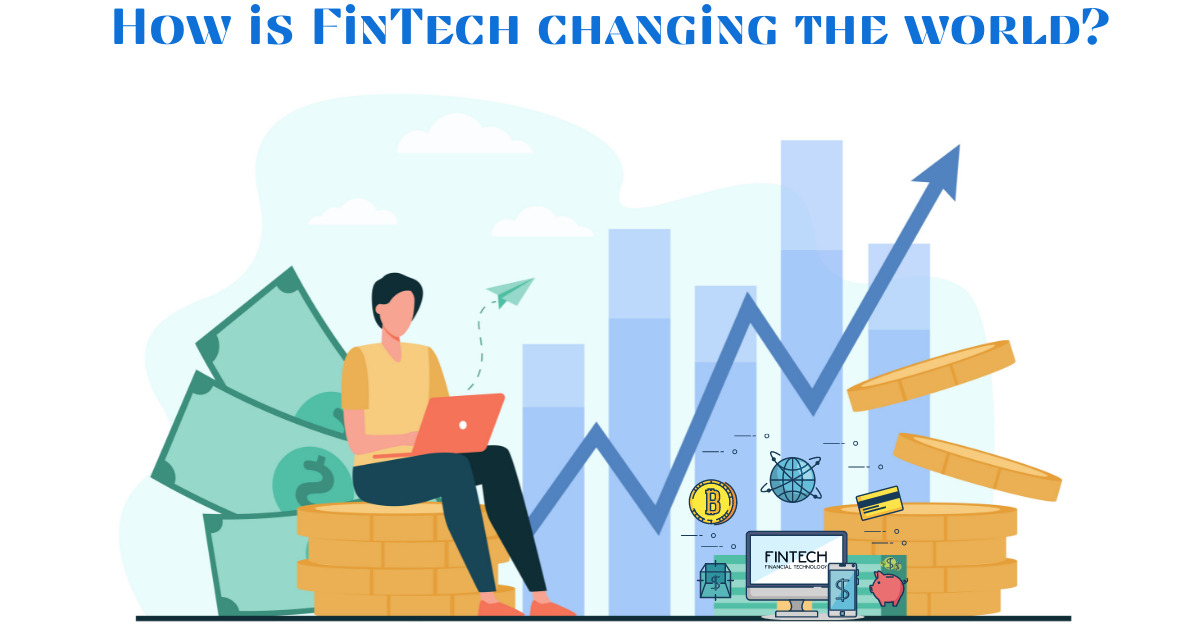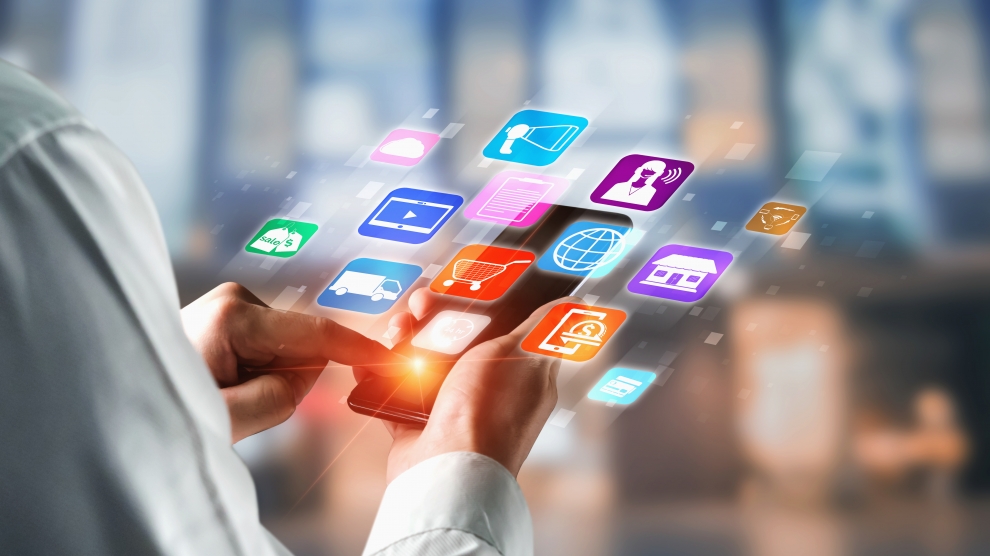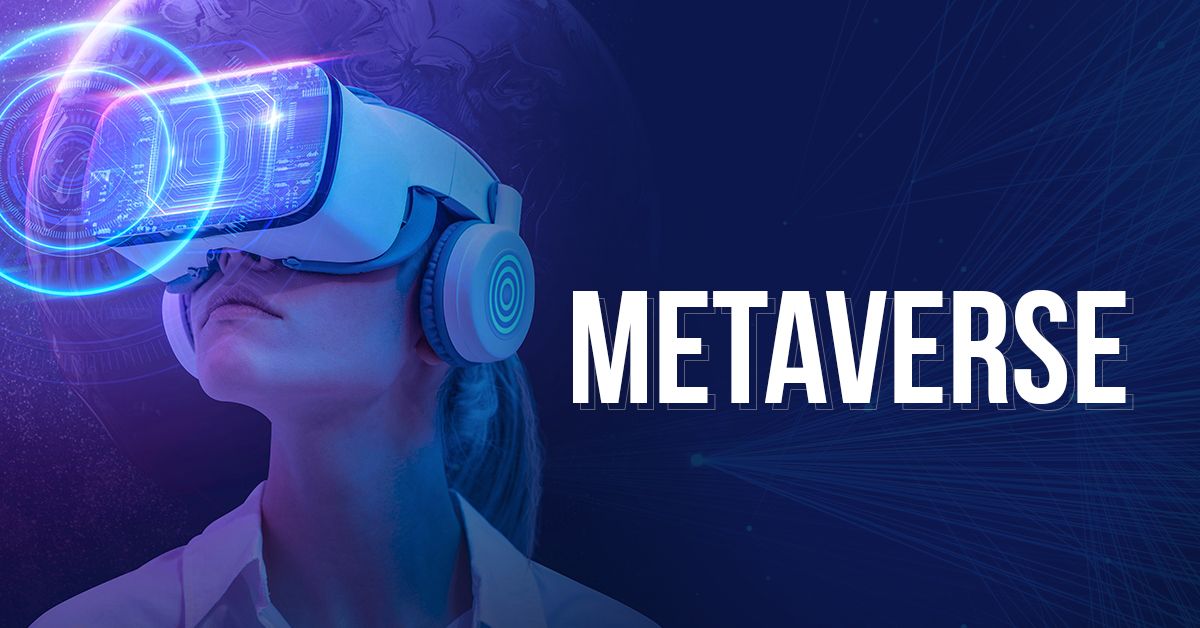Introduction
Welcome to the world of emerging technologies – Blockchain and Artificial Intelligence (AI)! Both these technologies have been making significant waves in recent years, transforming various industries and revolutionizing the way we live and work. While they may seem like two distinct fields, there is a growing synergy between Blockchain and AI that offers immense potential for innovation and advancement.
Blockchain, in its simplest form, is a revolutionary decentralized ledger technology that ensures transparency, security, and trust in digital transactions. On the other hand, AI refers to the development of computer systems capable of performing tasks that normally require human intelligence, such as speech recognition, problem-solving, and decision-making.
The connection between Blockchain and AI goes beyond mere technological advancements. Blockchain provides a robust platform for decentralized data management, enhanced security, and trust while AI enables automated decision-making, data analytics, and machine learning. The amalgamation of these two cutting-edge technologies opens up a world of possibilities and offers solutions to various challenges faced by traditional systems.
In this article, we will explore the fascinating relationship between Blockchain and AI, understanding how they complement each other and uncovering the potential benefits and challenges associated with their integration.
What is Blockchain?
Blockchain, at its core, is a digital ledger or a distributed database that records transactions across multiple computers or nodes. Rather than being owned and controlled by a single entity, the ledger is distributed and maintained by a network of participants, creating a decentralized system.
Each transaction on the Blockchain is grouped together in a block and appended to a chain of other blocks, hence the name “Blockchain.” Each block contains a unique and tamper-proof cryptographic hash that links it to the previous block, ensuring the integrity and immutability of the entire chain.
The key features that distinguish Blockchain technology include:
- Decentralization: Unlike traditional systems where a central authority is responsible for managing and validating transactions, Blockchain operates on a peer-to-peer network, where multiple participants collectively maintain and verify the ledger.
- Transparency: All transactions recorded on the Blockchain are visible to all participants in the network. This transparency enhances accountability and trust, as any attempted modifications to the data can be easily identified.
- Security: Blockchain utilizes advanced cryptographic techniques to secure transactions and prevent unauthorized access or tampering. The distributed nature of the ledger and the consensus mechanisms employed in Blockchain further enhance its robustness against cyber-attacks.
- Immutability: Once a transaction is recorded on the Blockchain, it becomes virtually impossible to alter or delete it. This feature ensures the integrity and permanence of the data stored on the Blockchain.
Blockchain technology has gained significant traction beyond its initial application in cryptocurrencies like Bitcoin. It is being adopted across various industries, including finance, supply chain management, healthcare, and more, to improve efficiency, transparency, and security in transactions and data management.
What is Artificial Intelligence (AI)?
Artificial Intelligence (AI) refers to the creation and development of computer systems that can perform tasks that typically require human intelligence. It encompasses a wide range of technologies and techniques that enable machines to perceive, understand, learn, reason, and interact.
AI systems can mimic human cognitive functions and perform tasks such as speech and image recognition, natural language processing, problem-solving, decision-making, and more. These capabilities are made possible through the use of machine learning algorithms, neural networks, deep learning, and other sophisticated AI models.
There are different types of AI, including:
- Narrow AI: Also known as Weak AI, this type of AI is designed to perform a specific task or set of tasks. Examples include voice assistants like Siri or Alexa, recommendation systems, and chatbots.
- General AI: Also referred to as Strong AI, general AI aims to replicate human-level intelligence and possess the ability to perform any intellectual task that a human can do. General AI is still largely hypothetical and remains a topic of extensive research and development.
- Superhuman AI: Superhuman AI refers to AI that surpasses human intelligence in a specific domain, such as playing chess or diagnosing medical conditions.
AI technologies have rapidly advanced in recent years, primarily due to the exponential growth in computing power, the availability of large volumes of data, and breakthroughs in algorithms. Today, AI is being leveraged in various industries, including healthcare, finance, transportation, agriculture, and entertainment, to automate tasks, enhance decision-making, and improve overall efficiency.
The integration of AI with other technologies, such as Blockchain, is unlocking even greater potential, enabling groundbreaking innovations and driving the Fourth Industrial Revolution.
The Relationship Between Blockchain and AI
The relationship between Blockchain and AI is symbiotic, with each technology supporting and enhancing the capabilities of the other. While Blockchain provides a secure and decentralized platform for data management and transaction verification, AI offers advanced analytics, automation, and machine learning to extract valuable insights from the data stored on the Blockchain. Together, they create a powerful combination that can drive innovation, transparency, and efficiency across various industries.
One of the key advantages of combining Blockchain and AI is in data sharing and security. Blockchain’s decentralized nature and cryptographic techniques ensure that sensitive data is protected and only accessible to authorized parties. AI algorithms can then be applied to analyze this data, identify patterns, and derive valuable insights, leading to more informed decision-making and predictive capabilities.
Moreover, Blockchain technology provides a transparent and auditable trail of data, which can be invaluable for AI algorithms. This transparency allows AI models to access a larger and more diverse dataset, enhancing their accuracy and effectiveness. The immutable nature of Blockchain also ensures that the integrity of the data is maintained, reducing the risk of fraudulent or tampered information.
Another aspect where Blockchain and AI intersect is through decentralized computing. Blockchain networks composed of multiple nodes can distribute data processing and computation tasks, improving the scalability and performance of AI algorithms. This distributed computing model reduces the burden on a single server and enables faster and more efficient data analysis.
The concept of smart contracts, which are self-executing agreements governed by predefined conditions, is another area where Blockchain and AI converge. Smart contracts can facilitate the automation of transactions and processes, eliminating the need for intermediaries and reducing costs. AI algorithms can be integrated with smart contracts to analyze data, validate conditions, and trigger automated actions, further streamlining and enhancing the efficiency of operations.
Tokenization is another promising area where Blockchain and AI come together. Tokens representing digital assets can be utilized as incentives or rewards for AI algorithms that contribute to the network. This incentivization mechanism encourages participation and collaboration, leading to the development of more advanced and accurate AI models.
While the relationship between Blockchain and AI holds immense potential, there are also challenges and limitations to consider. These include scalability issues, the energy consumption associated with Blockchain mining, the privacy of sensitive data, and the ethical implications of AI decision-making.
Nevertheless, the integration of Blockchain and AI has the power to revolutionize industries, drive innovation, and unlock new possibilities in the digital era.
Data Sharing and Security
Data sharing and security are critical aspects in today’s digital landscape, and the combination of Blockchain and AI provides innovative solutions to address these challenges.
Traditional data sharing methods often involve centralized systems, where a single entity has control over the data and decides how it is shared. This approach poses risks, such as data breaches, unauthorized access, and lack of transparency. However, Blockchain’s decentralized architecture offers an alternative paradigm for secure and transparent data sharing.
With Blockchain, data can be stored across a distributed network of computers, known as nodes. Each participant in the network maintains a copy of the entire Blockchain, ensuring that no single point of failure exists. When it comes to data sharing, Blockchain enables participants to securely share information through smart contracts, which automatically enforce predefined rules and conditions for accessing and using the data.
The immutability and transparency of Blockchain provide added layers of security for data sharing. Once data is recorded and verified on the Blockchain, it cannot be altered or tampered with, ensuring the integrity and accuracy of the shared information. This makes Blockchain particularly valuable in scenarios where data authenticity and auditability are critical, such as supply chain management, healthcare records, and financial transactions.
Furthermore, the cryptographic mechanisms employed by Blockchain ensure the privacy and confidentiality of data. While transactions recorded on the Blockchain are public, the actual data can be encrypted or stored off-chain, with only the necessary access keys or permissions shared on the Blockchain. This ensures that sensitive information remains secure while still benefiting from the transparency and accountability of the Blockchain.
When it comes to AI, the integration of AI algorithms with Blockchain enables secure and privacy-preserving data analysis. AI models can access data stored on the Blockchain while respecting the privacy restrictions defined by the data owners or participants. This eliminates the need for centralized data repositories and reduces the risks associated with data breaches or misuse. AI algorithms can perform computations on distributed data without directly accessing the actual sensitive information, maintaining data privacy and confidentiality.
By combining Blockchain and AI, organizations can implement robust and secure data sharing and analytics platforms. Data owners have more control over their information, and participants can trust that the data they are accessing is reliable and has not been tampered with. This collaboration between Blockchain and AI enhances data security, privacy, and integrity while facilitating efficient and trustworthy data exchange.
Decentralized Computing
Decentralized computing is a fundamental characteristic of Blockchain technology that has significant implications for various industries, including the field of Artificial Intelligence (AI). Traditionally, computing tasks have been reliant on centralized servers or cloud infrastructure, which can pose challenges regarding scalability, data privacy, and performance. However, Blockchain’s decentralized architecture offers an alternative approach to computing by distributing the computational load across a network of nodes.
In a Blockchain network, multiple nodes participate in the validation and verification of transactions. These nodes collectively form a decentralized computing infrastructure that can be leveraged by AI algorithms and applications.
Decentralized computing offers several advantages for AI:
Scalability: By distributing computational tasks across the network, decentralized computing can handle large and complex AI algorithms more efficiently. Instead of relying on a single server or data center, the workload can be divided among numerous nodes, increasing processing speed and capacity.
Reliability and Resilience: Decentralized computing is inherently more robust and resilient compared to centralized systems. Since there is no single point of failure, the network remains operational even if some nodes go offline or fail. This ensures uninterrupted availability of computing resources, reducing the risk of downtime or data loss.
Privacy: Decentralized computing can enhance data privacy by enabling computations to be performed locally on individual nodes. This means that sensitive data does not need to be shared with a central server or cloud provider, reducing the exposure to potential security breaches or unauthorized access.
Cost-Efficiency: Decentralized computing can lead to cost savings by eliminating the need for expensive infrastructure, such as high-performance servers or cloud subscriptions. Nodes in a Blockchain network can contribute their computing resources, creating a shared and cost-effective computational ecosystem that can be utilized by AI applications.
Decentralized computing also aligns with the principles of trust and transparency that underpin Blockchain technology. AI algorithms can take advantage of the distributed nature of Blockchain networks to ensure that computations are performed in a fair and unbiased manner. Each node in the network verifies the results of the computation, increasing trust and reducing the chance of malicious or erroneous outcomes.
While decentralized computing offers numerous benefits, there are also challenges to overcome. Ensuring consistent performance across a diverse network of nodes, maintaining data consistency, and addressing potential security vulnerabilities require careful design and implementation. However, as Blockchain and AI technologies continue to evolve, decentralized computing is poised to play a vital role in enabling scalable, reliable, and privacy-enhanced AI applications.
Smart Contracts and AI
One of the exciting advancements in the intersection between Blockchain and AI is the integration of smart contracts with AI technologies. Smart contracts are self-executing agreements that are encoded onto the Blockchain, enabling automated and trustless transactions without the need for intermediaries.
When combined with AI, smart contracts have the potential to revolutionize various industries by automating complex processes and enabling AI algorithms to interact with the Blockchain directly.
One of the key benefits of integrating AI with smart contracts is the ability to automate decision-making processes. AI algorithms can analyze data stored on the Blockchain, evaluate predefined conditions, and trigger corresponding actions within the smart contract. For example, an AI-powered supply chain management system can autonomously verify shipment conditions, monitor inventory levels, and automatically initiate deliveries or payments based on predefined criteria.
This integration also enables the creation of decentralized autonomous organizations (DAOs), which are organizations governed by smart contracts and AI algorithms rather than centralized authorities. DAOs can leverage AI to make collective decisions, allocate resources, and distribute rewards based on predefined rules encoded in smart contracts. By removing human intermediaries, DAOs can enhance transparency, efficiency, and trust in decision-making processes.
Moreover, AI algorithms can enhance the accuracy and effectiveness of smart contracts by analyzing data on the Blockchain. AI-powered auditing systems can review and verify the integrity of transactions, identify patterns of fraudulent behavior, and provide real-time monitoring of data and transaction flows. This can help detect and prevent fraud or malicious activities, boosting the security and reliability of smart contracts.
Additionally, the combination of AI and smart contracts can facilitate more complex and dynamic agreements. AI algorithms can continually analyze data and adjust the terms and conditions of smart contracts based on evolving factors. For instance, in insurance contracts, AI algorithms can evaluate real-time data related to a policyholder’s behavior or risk profile, and adjust premiums or coverage accordingly. This flexibility enables more personalized and adaptive contracts that align with the specific needs and circumstances of the participants.
It is worth noting that the integration of AI and smart contracts also presents challenges and considerations. Legal and ethical implications arise regarding liability, accountability, and the decision-making processes of AI systems. Ensuring transparency, explainability, and fair governance in the implementation of smart contracts and AI is crucial for building trust and addressing these concerns.
Nonetheless, the integration of AI with smart contracts holds immense potential for revolutionizing various industries, enhancing automation, and enabling decentralized and autonomous operations.
Tokenization and Incentives
Tokenization and incentives are two key aspects that arise from the synergy between Blockchain and AI, offering innovative solutions and opportunities for various industries.
Tokenization involves the representation of real-world assets or digital assets as tokens on the Blockchain. These tokens can represent ownership, access rights, or other forms of value. By tokenizing assets, Blockchain technology enables fractional ownership, easier transferability, and enhanced liquidity.
When combined with AI, tokenization can revolutionize industries such as finance, real estate, supply chain management, and intellectual property, among others.
Financial Applications: Tokenization enables the creation of digital securities or tokenized assets, allowing investors to trade fractions of traditionally illiquid assets such as real estate or artwork. AI algorithms can analyze the market trends and investor behavior, providing insights for more informed trading decisions.
Supply Chain Management: Tokenization can be utilized to track and verify the authenticity of products throughout the supply chain. AI algorithms can analyze the data stored in the tokens, ensuring transparency and quality control, while improving traceability and reducing the risk of counterfeit goods.
Intellectual Property: Tokenization can enable creators to tokenize their intellectual property, allowing for more efficient licensing and revenue distribution. AI algorithms can help identify copyright infringements, track digital licenses, and manage royalty payments in a transparent and automated manner.
In addition to tokenization, Blockchain and AI integration also introduces new incentives and reward mechanisms. Tokens can be used as incentives to encourage participation, collaboration, and contribution to the network. AI algorithms that perform valuable tasks or provide accurate predictions can be rewarded with tokens, creating a system where AI models are incentivized to continuously improve their performance.
Token-based incentives align with the principles of decentralization and collective decision-making that underpin Blockchain networks. Participants who contribute computing resources or valuable data to the network can receive tokens in return, creating a self-sustaining ecosystem. These tokens can then be used within the network, exchanged for other digital or physical assets, or even traded on cryptocurrency exchanges.
The combination of AI and tokenization encourages innovation and cooperation. Contributors are motivated to share data, knowledge, and AI models, knowing that their efforts will be rewarded with tokens. This collaborative approach fosters the development of more robust and accurate AI models and advances the state of AI research as a whole.
However, tokenization and incentives also raise concerns regarding regulation, governance, and the potential for token manipulation or value speculation. It is essential to strike a balance between providing incentives and ensuring a fair and transparent token economy.
Nevertheless, the integration of tokenization and incentives with Blockchain and AI offers exciting possibilities for driving innovation, creating new revenue streams, and fostering greater collaboration and participation in various industries.
Challenges and Limitations
While the integration of Blockchain and AI presents significant opportunities, there are also challenges and limitations that need to be addressed for widespread adoption and successful implementation.
Scalability: Both Blockchain and AI have scalability limitations. Blockchain networks face challenges in processing a large number of transactions and storing vast amounts of data. Similarly, AI algorithms may require significant computational resources, making it challenging to scale AI applications to handle massive datasets or complex computations.
Energy Consumption: Blockchain mining and AI computations can be energy-intensive processes. The computational power required for Blockchain consensus mechanisms and the training of AI models can have a considerable environmental impact. Finding energy-efficient solutions or exploring alternative consensus mechanisms is crucial to mitigate these concerns.
Privacy and Security: While Blockchain technology offers secure and transparent data management, there are still concerns surrounding the privacy of sensitive data. Ensuring that personally identifiable information and other sensitive data remain protected and comply with regulatory requirements is a challenge. Additionally, securing the AI models and algorithms from malicious attacks or tampering is essential to maintain the integrity and reliability of AI systems.
Data Quality and Bias: The effectiveness of AI algorithms heavily relies on the quality and diversity of the data they are trained on. Blockchain can offer a transparent and auditable data trail, but ensuring the accuracy, reliability, and representativeness of the data can be challenging. Moreover, there is a potential for biased outcomes if the training data used for AI models is skewed or lacks diversity.
Legal and Ethical Considerations: The integration of Blockchain and AI raises legal and ethical questions. Determining liability and accountability in decentralized systems can be complex. Additionally, ensuring transparency and fairness in AI decision-making processes, addressing data ownership and consent, and avoiding bias and discrimination are critical aspects to consider.
Technological Maturity: Both Blockchain and AI are rapidly evolving fields, and the technologies are still in the early stages of development. As a result, there can be limitations in terms of toolkits, frameworks, and standards. Overcoming interoperability challenges, ensuring compatibility between different Blockchain networks and AI systems, and establishing common protocols are necessary for seamless integration.
Regulatory and Compliance Frameworks: The regulatory landscape for Blockchain and AI is still evolving, and there is a need for comprehensive frameworks to address legal and compliance requirements. Ensuring compliance with data protection regulations, intellectual property rights, and consumer protection laws is crucial for the widespread adoption of Blockchain and AI technologies.
These challenges and limitations require collaborative efforts from industry experts, policymakers, researchers, and technologists to address them effectively. Overcoming these hurdles will pave the way for the full potential of Blockchain and AI integration to be realized, driving innovation, transparency, and efficiency across industries.
Conclusion
The integration of Blockchain and Artificial Intelligence (AI) represents a dynamic and synergistic relationship that holds immense potential for transforming industries and driving innovation. Blockchain technology provides a decentralized and transparent platform for secure data management, while AI enables automated decision-making, advanced analytics, and machine learning capabilities.
Through the combination of Blockchain and AI, data sharing and security can be enhanced, offering new ways of securely exchanging and analyzing information. The decentralized nature of Blockchain ensures transparency and immutability, while AI algorithms can extract valuable insights from the data. This combination can revolutionize industries such as finance, supply chain management, healthcare, and more.
Decentralized computing, enabled by Blockchain, offers scalability, reliability, and privacy benefits for AI applications. By distributing computational tasks across a network of nodes, decentralized computing overcomes the limitations of centralized systems and enables faster and more efficient data analysis.
The integration of smart contracts with AI provides automation and trustless transactions. AI algorithms can analyze data on the Blockchain, making autonomous decisions and triggering actions based on predefined conditions. This combination offers the potential for decentralized autonomous organizations (DAOs) and brings greater transparency and efficiency to various processes.
Tokenization and incentives, facilitated by Blockchain and AI, unlock new possibilities for fractional ownership, liquidity, and collaboration. Tokenization allows for the representation of real-world and digital assets on the Blockchain, while incentives in the form of tokens motivate participation and the sharing of resources, driving innovation and collaboration.
However, there are challenges and limitations to address. Scalability, energy consumption, privacy and security concerns, data quality and bias, legal and ethical considerations, technological maturity, and regulatory frameworks need to be carefully navigated to achieve the full potential of Blockchain and AI integration.
In conclusion, the relationship between Blockchain and AI presents a transformative force that can revolutionize industries, enhance data management, and drive innovation. Efforts to overcome challenges and limitations while embracing the opportunities presented by this synergy will lead to a future where Blockchain and AI seamlessly work together to reshape our digital landscape.







